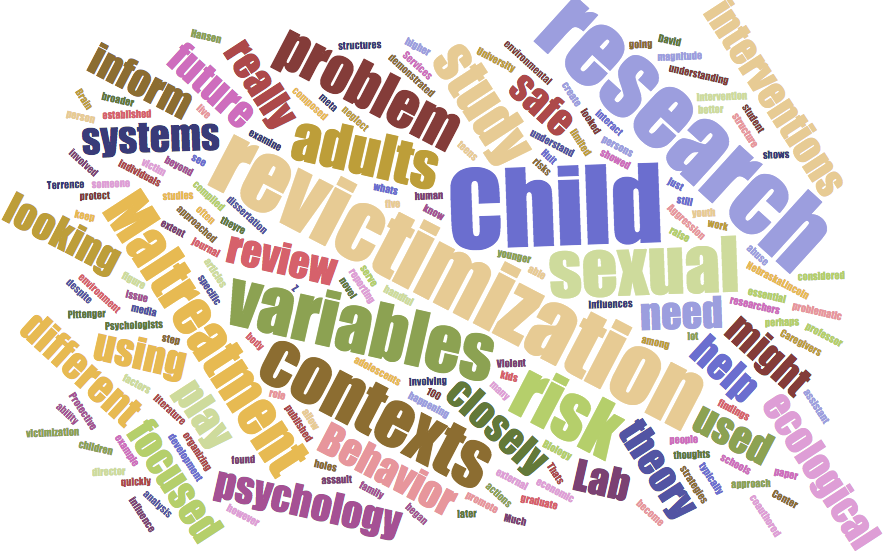
When Samantha Pittenger began her dissertation research on child sexual assault, she found some holes in the body of research.
Most problematic: Much of the research involving revictimization focused on adults, and only a handful of the limited studies on youth looked at variables beyond the victim.
“There is a lot of literature that has established sexual revictimization as a problem,” said Pittenger, a University of Nebraska-Lincoln psychology graduate student in the Child Maltreatment Lab. “But most has really focused on adults. We know that people are reporting this as adults, but we need to understand more about what’s happening when they’re younger.”
So Pittenger compiled more than 100 research articles and demonstrated the problem of revictimization among adolescents and teens. The review, which was published in the journal Aggression and Violent Behavior, showed how external influences – not just a person’s thoughts and actions – raise the risk of child revictimization.
Pittenger approached the research using ecological systems theory, organizing the findings into a structure that can help future researchers more closely examine how many specific variables interact to create risk of revictimization.
Psychologists have used ecological systems theory to study the factors and risks of child neglect and maltreatment. It is composed of up of five environmental contexts that play a role in human development – from family and schools to economic structures and media – but it has not been typically used to study child sexual abuse.
The novel approach can serve to inform intervention strategies, Pittenger said, by looking more closely at which variables are in play. The different contexts will allow understanding of how the individual’s environment can promote risk – or perhaps the extent of the issue, she said.
“For example, someone could do a meta analysis if we’re using the same variables, which could help us see what magnitude this problem really has,” she said.
Pittenger said broader study of sexual revictimization in children is essential to better inform interventions. Caregivers are often able to step up and protect a child quickly and they might not become involved with Child Protective Services; but if research shows that despite that, and there is still a higher risk for later victimization, other interventions should be considered.
“But before we can do that, we need to figure out what is going to work to keep that person safe,” she said. “That’s what we did with this review: looked at all of the different contexts that these kids live in and tried to determine what about those contexts might influence their ability to be safe in the future.”
The paper was co-authored by Terrence Z. Huit, a research assistant, and David Hansen, professor of psychology and director of the Child Maltreatment Lab and the Center for Brain, Biology and Behavior.








